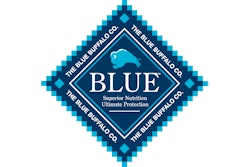
While Packaged Facts analysts forecast that the U.S. pet food market would continue to grow over the next few years, the rate of growth may slow. Several factors may contribute to this slowdown forecast by Packaged Facts analysts in "Pet Food in the US, 14th Edition.” Between now and 2023, U.S. pet food sales may achieve annual growth of approximately 3 percent at first, slowing to closer to two percent by 2023. In that year, the U.S. pet food market may reach an estimated US$30.8 billion.
Here are three reasons Packaged Facts analysts forecast a slowdown in U.S. pet food market growth.
-
Pet population steady
The population of dogs, cats and other pets in the United States doesn’t seem likely to grow dramatically in the next few years.
-
Already upsold
Premiumization drove growth in the U.S. pet food market’s value, even as volume stagnated over the past few years. There’s a limit to how much pet owners can be upsold though, and that limit may be near. Many of the pet owners who could be convinced to buy premium and superpremium products have already been convinced.
-
Mass premiumization
Those premium pet food buyers now have a wider range of retail options than in the past, resulting in “mass premiumization.” Numerous pet foods that once could only be found in pet specialty outlets now can be bought in mass market retailers. Blue Buffalo provides a textbook example of this. What’s more, internet-based retailers blur the divide between pet specialty and mass-market channels even further. E-commerce pet food retailers, like Amazon and Chewy, sell everything from budget to superpremium. Plus, internet-based retailers’ private label pet foods now compete directly with other brands.


















